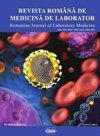SPP1 is a biomarker of cervical cancer prognosis and involved in immune infiltration
IF 0.5
4区 医学
Q4 MEDICINE, RESEARCH & EXPERIMENTAL
引用次数: 0
Abstract
Abstract Background: Cervical cancer is the fourth commonly occurred cancer in women around the world. However, it still lacks effective approaches to improve current prognosis of cervical cancer and prevent metastasis. Objective: We aim to discover a promising biomarker for cervical cancer prognosis by utilizing bioinformatics analysis. Methods: Gene expression was analyzed by the datasets from The Cancer Genome Atlas Program-Cervical squamous cell carcinoma and endocervical adenocarcinoma (TCGA-CESC) dataset and three independent patient cohort datasets. Biological process and pathway enrichment were performed by Gene Ontology (GO) and Kyoto Encyclopedia of Genes and Genomes (KEGG) pathways analysis. Immune infiltration was analyzed through TISIDB tool. Results: SPP1 gene was highly expressed in cervical cancer tissues. In addition, SPP1 was positively correlated to advanced CESC stages and nodal metastasis status. SPP1 co-expressed genes are mainly enriched in immunological processes. Furthermore, SPP1 expression is involved in immune infiltration level, in which several tumour infiltrating lymphocytes are correlated with SPP1. SPP1 overexpression promotes a wide spectrum of chemokines and immunoinhibiors which contribute to CESC progression. Conclusions: SPP1 is a promising biomarker and a prognostic factor of CESC. Tumour infiltrating lymphocytes are also possibly regulated by SPP1. Our study suggests that investigation on SPP1 is a new direction for CESC therapy.SPP1是宫颈癌预后的生物标志物,参与免疫浸润
摘要背景:宫颈癌是全球第四大女性常见病。然而,目前尚缺乏改善宫颈癌预后和预防转移的有效途径。目的:利用生物信息学分析发现宫颈癌预后的生物标志物。方法:采用Cancer Genome Atlas Program-Cervical squamous cell carcinoma and endocervical adenocarcinoma (TCGA-CESC)数据集和3个独立的患者队列数据集分析基因表达。通过基因本体(GO)和京都基因与基因组百科全书(KEGG)途径分析进行生物过程和途径富集。通过TISIDB工具分析免疫浸润情况。结果:SPP1基因在宫颈癌组织中高表达。此外,SPP1与CESC晚期分期和淋巴结转移状态呈正相关。SPP1共表达基因主要富集于免疫过程中。此外,SPP1的表达参与免疫浸润水平,其中几种肿瘤浸润淋巴细胞与SPP1相关。SPP1过表达促进了广泛的趋化因子和免疫抑制剂,这些趋化因子和免疫抑制剂有助于CESC的进展。结论:SPP1是一种有前景的生物标志物和CESC的预后因素。肿瘤浸润淋巴细胞也可能受SPP1的调控。我们的研究提示对SPP1的研究是CESC治疗的新方向。
本文章由计算机程序翻译,如有差异,请以英文原文为准。
求助全文
约1分钟内获得全文
求助全文
来源期刊

Revista Romana De Medicina De Laborator
MEDICINE, RESEARCH & EXPERIMENTAL-
CiteScore
0.31
自引率
20.00%
发文量
43
审稿时长
>12 weeks
期刊介绍:
The aim of the journal is to publish new information that would lead to a better understanding of biological mechanisms of production of human diseases, their prevention and diagnosis as early as possible and to monitor therapy and the development of the health of patients
 求助内容:
求助内容: 应助结果提醒方式:
应助结果提醒方式:


